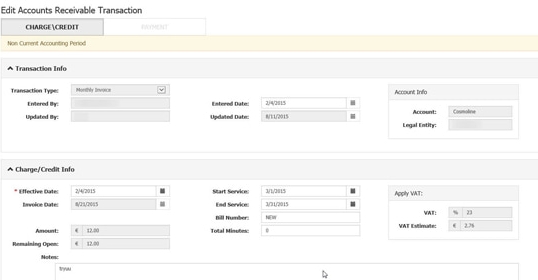Companies from various industries rely on .NET Core (now the unified .NET platform) for secure, high-speed backend, and on ReactJS for responsive frontend. Together the pair scales, ticking the boxes for performance and compliance. To make that picture real, hiring teams hunt for engineers who can craft APIs, juggle data workflows, and shape good interfaces. All of it has to play with industry rules - HIPAA, PCI DSS, you name it - before the product sees daylight.
Healthcare Use Cases
Hospitals, clinics and insurers now build and refresh software on a two-piece engine: .NET Core behind the scenes and React up front.
Together they power seven daily arenas of care.
Electronic records. Staff record demographics, meds and lab work through React dashboards that talk to .NET Core APIs. The same server side publishes FHIR feeds so outside apps can pull data, while React folds scheduling, imaging and results into a single screen. One large provider already ditched scattered tools for a HIPAA-ready .NET Core/React platform tied to state and federal databases.
Telemedicine. Booking, identity checks and data routing live on .NET Core services. React opens the video room, chat and shared charts in the browser. An FDA-cleared eye-care firm runs this way, with AI triage plugged into the flow and the server juggling many payers under one roof.
AI diagnostics and decision support. .NET Core microservices call Python or ONNX models, then stream findings over SignalR. React paints heat-mapped scans, risk graphs and alert pop-ups. The pattern shows up in everything from retinal screening to fraud detection at insurers.
Scheduling and patient portals. .NET Core enforces calendar rules and fires off email or SMS reminders, while React gives patients drag-and-drop booking, secure messaging and live visit links. The same front end can surface AI test results the moment the backend clears them.
Billing and claims. Hospitals rebuild charge capture and claim prep on .NET Core, which formats X12 files and ships them to clearinghouses. React grids let clerks tweak line items, and adjusters at insurers watch claim status update in real time, complete with AI fraud scores.
Remote patient monitoring. Device data streams into .NET Core APIs, which flag out-of-range values and push alerts. React clinician dashboards reorder patient lists by risk, while React Native or Flutter apps show patients their own vitals and care plans.
Mobile health. Most providers and payers ship iOS/Android apps - or Progressive Web Apps - built with React Native, Flutter or straight React. All lean on the same .NET Core microservices for auth, records, claims and video sessions.

Developer Capabilities to Expect in Healthcare
Developers must speak fluent C#, ASP.NET Core middleware, Entity Framework and async patterns, plus modern React with TypeScript, Hooks and accessibility know-how.
They wire up OAuth2 with IdentityServer, juggle FHIR, HL7 or X12 data, and push live updates over SignalR.
Front-end work often rides on MUI or Ant Design components, Redux or Context state, and chart libraries such as Recharts or D3. Back-end extras include logging with Serilog, health checks, background workers and calls to Python AI services.
Delivery depends on Docker, Kubernetes or cloud container services, CI/CD pipelines in Azure DevOps or GitHub Actions, and infrastructure code via Bicep, Terraform or CloudFormation. Pipelines run unit tests (xUnit, Jest), static scans and dependency checks before any release.
Security and compliance sit at the core: TLS 1.2+, encrypted storage, least-privilege roles, audit logs, GDPR data-rights handling, and regular pen-testing with OWASP tools. Domain know-how - FHIR resources, SMART auth, DICOM imaging, IEEE 11073 devices and insurer EDI flows - rounds out the toolkit.
With that mix, teams can ship EHRs, telehealth portals, AI diagnostics, scheduling systems, billing engines and RPM platforms on a single, modern stack.
Belitsoft brings hands-on experience combining FHIR-compliant .NET Core services with accessible React interfaces to build secure, real-time healthcare platforms ready for scale and regulation.
FinTech Use Cases
Banks and fintechs lean on a .NET Core back end and a React front end for every critical job: online banking, real-time trading and crypto exchanges, payment handling, insurance claims, and fraud dashboards.
Finance demands uptime, airtight security and millisecond latency, so the stack is deployed as micro-services in an event-driven design that scales fast and isolates faults.
A typical setup splits Accounts, Payments, Trading Engine and Notification services - they talk by APIs and RabbitMQ/Kafka. When the Payments service closes a transaction, it emits an event that the Notification service turns into an alert. .NET Core’s async model plus SignalR streams live prices or statuses over WebSockets to a React SPA that tracks complex state with Redux / Zustand and paints real-time charts through D3.js or Highcharts. All traffic is wrapped in strong encryption, while Identity or OAuth2 enforces MFA, role rules and signed transactions.
U.S. banks are modernizing legacy back ends this way because .NET Core runs on Windows, Linux and any cloud. They ship the services to AKS or EKS clusters in several regions behind load balancers and fail-over, staying up 24 × 7 and auto-scaling consumers at the opening bell. The result: a stable, fast back end and a flexible, secure front end.

Developer Capabilities to Expect in FinTech
Back-end engineers need deep C#, multithreading, ASP.NET Core REST + gRPC, SQL Server / PostgreSQL (plus NoSQL for tick data), TLS & hashing, PCI-DSS, full audit trails and Kafka / RabbitMQ / Azure Service Bus.
Front-end engineers bring solid React + TypeScript, render-performance tricks (memoization, virtualization), WebSockets / SignalR, visualization skills, big-data handling and responsive design.
Domain fluency (trading rules, accounting maths, SOX and FINRA) keeps algorithms precise and compliant - a rounding slip or race condition can cost millions.
Reliability rests on Docker images, Kubernetes, CI/CD (Jenkins, Azure DevOps, GitHub Actions) with security tests, blue-green or canary rollout, Prometheus + Grafana / Azure Monitor, exhaustive logs, active-active recovery and auto-scaling.
Teams work Agile with a DevSecOps mindset so every commit bakes in security, operations and testing.
E-Commerce Use Cases
In U.S. e-commerce - retail sites, online marketplaces, and B2B portals - .NET Core runs the back end and React drives the front end.
The stack powers product catalogs, carts, checkout, omnichannel platforms, supply-chain and inventory portals, and customer-service dashboards.
Traffic bursts (holiday sales) are absorbed through cloud-native deployments on Azure or AWS with auto-scaling.
A headless, microservice style is common: separate services handle catalog, inventory, orders, payments, and user profiles, each with its own SQL or NoSQL store.
React builds a SPA storefront that talks to those services by REST or GraphQL.
Server-side rendering or prerendering (often with Next.js) keeps product pages SEO-friendly. Rich UI touches - faceted search, live stock counts, personal recommendations - rely on React Context, hooks, and personalization APIs.
Events flow through Azure Service Bus or RabbitMQ - an order event updates stock and triggers email.
Secure API calls to Stripe, PayPal, etc., plus Redis and browser-side caching, cut latency. CDN delivery, monitoring tools, and continuous deployment keep the storefront fast, fault-tolerant, and easy to evolve.

Developer Capabilities to Expect in E-Commerce
Back-end engineers design clear REST APIs, model domains, tune SQL and NoSQL schemas, use EF Core or Dapper, integrate external payment/shipping/tax APIs via OAuth2, apply Saga and Circuit-Breaker patterns, enforce idempotency, block XSS/SQL-injection, and meet PCI by tokenizing cards.
Front-end engineers craft responsive layouts, manage global state with Redux or React Context, code-split and lazy-load images, and deliver accessible, cross-browser, SEO-ready pages.
Many developers switch between C# and JavaScript, debug both in VS/VS Code, and partner with designers using Agile feedback loops driven by analytics and A/B tests.
DevOps specialists automate unit, integration, and end-to-end tests (Selenium, Cypress), wire CD pipelines for weekly updates, run CDNs, and watch live metrics in New Relic or Application Insights.
Logistics & Supply Chain Use Cases
Logistics firms wire their operations around a .NET Core back-end and a React front-end so every scan, GPS ping or warehouse sensor reading appears instantly to drivers, dispatchers and customers.
The system pivots on four core apps - route-planning, package tracking, warehouse stock control and analytics dashboards.
Devices publish events (package-scanned, truck-location, temperature-spike) onto Kafka/RabbitMQ, microservices such as Tracking, Routing and Inventory pick them up, update records in SQL, stream logs to a NoSQL/time-series store, run geospatial maths for best routes, and push notifications.
React single-page dashboards - secured by Azure AD - subscribe over WebSocket/SignalR, redraw maps and charts without lag, cluster thousands of markers, and keep working offline on tablets in the yard.
Everything runs in containers on Kubernetes across multiple cloud regions - new pods spin up when morning scans surge.
The event-driven design keeps components loose but synchronized, so outages are isolated, traffic spikes are absorbed, partners connect via EDI/APIs, and the supply chain stays visible in real time.

Developer Capabilities to Expect in Logistics & Supply Chain
Teams that ship this experience blend real-time back-end craft with front-end visual skill. .NET engineers design asynchronous, message-driven services, define event schemas, handle out-of-order or duplicate messages, tune SQL indexes, stream sensor data, secure APIs and device identities, and integrate telematics or EDI feeds.
React specialists maintain live state, wrap mapping libraries, debounce or cluster frequent updates, design for wall-size dashboards and rugged tablets, and add service-worker offline support.
All developers benefit from logistics domain insight - route optimization, geofencing, stock thresholds - and from instrumenting code, so data and BI queries arrive ready-made.
DevOps staff monitor 24/7 flows, alert if a warehouse falls silent, run chaos tests, simulate event streams, deploy edge IoT nodes, and iterate quickly with feedback from drivers and floor staff.
Combined, these skills turn the architecture above from blueprint into a resilient, real-time logistics platform.
Manufacturing Use Cases
Car plants, chip fabs, drug lines, steel mills and food factories all ask different questions, so .NET Core micro-services and React dashboards get tuned to each shop floor.
Automotive. Carmakers run hundreds of work-stations that feed real-time data to .NET services in the background while React dashboards in the control room flash downtime and quality warnings. The same stack drives supplier and dealer portals, spreads alerts worldwide when a part is short, and ties production data back to PLM for recall tracking. Modern MES roll-outs have already slashed defects and sped delivery.
Electronics. In semiconductor and PCB plants, machines spit out sub-second telemetry. .NET services listen over OPC UA or MQTT, flag odd readings, and shovel every byte into central data lakes. React lets supervisors click from a yield dip straight to sensor history. Critical Manufacturing MES shows the model: a .NET core that speaks SECS/GEM or OPC UA and even steers kit directly, logging every serial and test for rapid recall work.
Pharma. GMP rules and 21 CFR Part 11 demand airtight audit trails, which a .NET back-end supplies while React tablets walk operators through each Electronic Batch Record step. Lab systems feed results to the same services and analysts sign off in real time. The stack coexists with legacy software, yet lets plants edge toward cloud MES and predictive maintenance that pings operators before a batch spoils.
Heavy industry. Steel furnaces, presses and turbines still rely on PLCs for hard real-time loops, but .NET gateways now mirror temperatures to the cloud and drive actuators on site. React boards merge furnace status, rolling-mill output and work-orders on one screen. Vibration streams land in micro-services that predict failures; customers see their own machine telemetry in service portals. Containers and Kubernetes let plants bolt new code onto old gear without full rip-and-replace.
Consumer goods. Food and beverage lines run fast and in bulk. PLC events shoot to Kafka or Event Hub, .NET services raise alerts, and React portals put live rates, downtime and quality on phones and wall-screens. Retail buyers place bulk orders through the same front-end, with .NET handling stock, delivery slots and promo logic under holiday-peak load. Batch-to-distribution traceability and sensor-based waste reduction ride the same rails, all on a single tech stack that teams reuse across brands and sites.

Developer Capabilities to Expect in Manufacturing
Back-end developers live in C# and modern .NET, craft ASP.NET Core REST or gRPC services, wire in Polly circuit breakers, tracing, SQL Server, Entity Framework, NoSQL or time-series stores, and speak to Kafka, RabbitMQ and industrial protocols through OPC UA or MQTT SDKs while watching garbage-collection pauses like hawks.
Front-end specialists work in TypeScript and React hooks, manage state with Redux or context, design for tablets and 60-inch screens with Material-UI or Ant, and pull charts with D3 or Highcharts. They keep data fresh via WebSocket or SignalR and lock down every call with token handling and Jest test suites.
DevOps engineers script CI/CD in Azure DevOps or GitHub Actions, bake Dockerfiles, docker-compose files and Helm charts, and keep Kubernetes clusters, Application Insights and front-end performance metrics ticking. Infrastructure as Code with ARM, Bicep or Terraform makes environments repeatable.
Domain know-how turns code into value: developers learn OEE, deviations, production orders, SPC maths and when to drop an ML-driven prediction into the data flow. They guard identity and encryption all the way.
Everyday kit includes Visual Studio or VS Code, SQL studios, Postman, Swagger, Docker Desktop, Node toolchains, Webpack, xUnit, NUnit and Jest. Fans of the pairing say React plus .NET Core gives unmatched flexibility and speed for modern factory apps.
Edtech Use Cases
Schools and companies now lean on a .NET Core back end with a React front end for every major digital-learning task.
The combo powers Learning Management Systems that track courses, content and users, Student Information Systems that control admissions, grades and timetables, high-stakes online-exam portals, and collaborative tools such as virtual classrooms and forums.
These platforms favor modular Web APIs or full micro-services: .NET Core services expose Courses, Students, Instructors and Content - sometimes split into separate services - while React presents a single-page portal whose reusable components (one calendar serves both students and teachers) adapt to every role.
Live chat, quizzes and video classes appear via WebSockets or SignalR plus WebRTC or embedded video, while the back end organises meetings and participants.
Everything sits in autoscaling clouds, so enrolment rushes or mass exams don’t topple the system.
Relational databases keep records, blob stores hold lecture videos, and SAS links or CDNs stream them.
REST is still common, but GraphQL often slims dashboard calls.
Multi-tenant SaaS isolates data with tenant IDs and rebrands the React UI at login. The goal throughout is flexibility, maintainability and the freedom to bolt on analytics or AI without disrupting live teaching.

Developer Capabilities to Expect in Edtech
Back-end engineers need fluent ASP.NET Core Web API design, mastery of complex rules (prerequisites, grade maths), solid relational modeling, comfort with IMS LTI, SAML or OAuth single sign-on, and the knack for plugging in CMS or cloud-storage SDKs.
Front-end engineers must craft large, form-heavy React apps, manage state with Redux, Formik or React Hook Form, embed rich-text and equation editors, deliver clear role-specific UX and pass every WCAG accessibility test.
Everyone should handle WebSockets/Azure SignalR/Firebase to keep multi-user views in sync, and write thorough unit, UI and load tests - often backed by SpecFlow or Cucumber - to ensure exams and grading never falter.
On the DevOps side, they automate CI/CD, define infrastructure as code, monitor performance, roll out blue-green or feature-toggled updates during quiet academic windows, and run safe data migrations when schemas shift.
Above all, they must listen to educators and translate pedagogy into code.
Government Use Cases
Across federal and state offices, the software wish-list now starts with citizen-facing portals. Tax returns, benefit sign-ups and driver-license renewals are moving to slick single-page sites where React handles the screen work while .NET Core APIs sit behind the scenes. Internal apps follow close behind: social-service and police case files, HR dashboards, document stores and other intranet staples are being refitted for faster searches and cleaner interfaces.
Open-data hubs and real-time public dashboards are another priority, giving journalists and researchers live feeds without manual downloads.
Time-worn systems built on Web Forms or early Java stacks are being split into microservices, packed into containers and shipped to Azure Government or AWS GovCloud. A familiar three-tier layout still rules, but with gateways, queues and serverless functions taking on sudden traffic spikes. Every byte moves over TLS 1.2+, every screen passes Section 508 tests, and every line of code plays nicely with the U.S. Web Design System, so the look stays consistent from one agency to the next.

Developer Capabilities to Expect in Government
To pull this off, back-end engineers need deep .NET Core chops plus a firm grip on OAuth 2.0, OpenID Connect and, where needed, smart-card or certificate logins. They write REST or SOAP services that talk to creaky mainframes one minute and cloud databases the next, always logging who did what for auditors. SQL Server, Oracle and a dash of XML or CSV still show up in the job description, as do Clean Architecture patterns that keep the code easy to read years down the road.
Front-end specialists live in React and TypeScript, but they also know ARIA roles, keyboard flows and screen-reader quirks by heart. They follow the government design kit, test in Chrome and - yes - Internet Explorer 11 when policy demands it.
On the DevOps side, teams wire up CI/CD pipelines that scan every build for vulnerabilities, sign Docker images, deploy through FedRAMP-approved clouds and feed logs into compliant monitors.
How Belitsoft Can Help
Belitsoft is the partner to call when .NET and React need to do the heavy lifting - in any domain. From HIPAA and PCI to MES and Kafka, our teams turn modern stacks into production-ready platforms that work, scale, and don’t fall over on launch day.
Belitsoft helps hospitals and startups build secure, compliant software across the care journey - from scheduling to diagnosis to billing:
- Full-stack teams fluent in C#, ASP.NET Core, React/React Native with healthcare UI/UX knowledge
- Integration of HL7, FHIR, DICOM, IEEE 11073 protocols
- AI diagnostic support using ONNX or Python models via .NET microservices
- HIPAA-ready systems with TLS 1.2+, audit logs, encrypted storage, OWASP-tested security
- Scalable platforms for telemedicine, billing, and remote monitoring
- DevOps with Azure DevOps, Docker/Kubernetes, CI/CD, infrastructure-as-code
Our .NET and React developers give fintechs the stack to compete - fast, and compliant:
- .NET Core microservices for trading engines, payment routing, and fraud detection
- React front ends with live data streaming (SignalR, WebSockets)
- Role-based auth with OAuth2, identity validation, and encryption standards
- Real-time dashboards for latency, fraud scoring, and user behavior tracking
- CI/CD, active-active deployments, observability with Prometheus/Grafana
Belitsoft builds platforms for Manufacturing & Industrial that speak both PLC and React:
- .NET Core services wired into OPC UA, SECS/GEM, MQTT
- React dashboards for shop floor views, EBR walkthroughs, and quality alerts
- Predictive maintenance pipelines tied to IoT sensors and real-time analytics
- Azure, Docker, Kubernetes deployment across multi-plant setups
We help e-commerce companies scale for sales:
- Headless React storefronts (SPA + SEO-ready via Next.js)
- .NET Core services for catalog, inventory, checkout, and user profiles
- Integration with Stripe, PayPal, Redis, and CDNs
- Personalization via React Context/Hooks, GraphQL APIs
- CI/CD pipelines for weekly deploys and fast A/B testing
Our company builds Logistics & Supply Chain platforms for freight operators, delivery networks, and warehouses:
- Event-driven architecture with .NET Core + Kafka/RabbitMQ
- SignalR-powered React dashboards with real-time maps, charts
- Support for edge computing, offline-first apps with PWA tech
- Device and driver authentication, secure APIs
- DevOps for continuous monitoring and simulated load testing
Looking for .NET Core and React developers? We bring domain insight, integration experience, and production-ready practices - whether you're building HIPAA-compliant healthcare platforms, real-time fintech engines, or cloud-native enterprise apps. Belitsoft helps from day one with architecture planning, secure delivery, and a focus on long-term maintainability. Contact our experts.
Recommended posts
Portfolio
Our Clients' Feedback





























































We have been working for over 10 years and they have become our long-term technology partner. Any software development, programming, or design needs we have had, Belitsoft company has always been able to handle this for us.
Founder from ZensAI (Microsoft)/ formerly Elearningforce